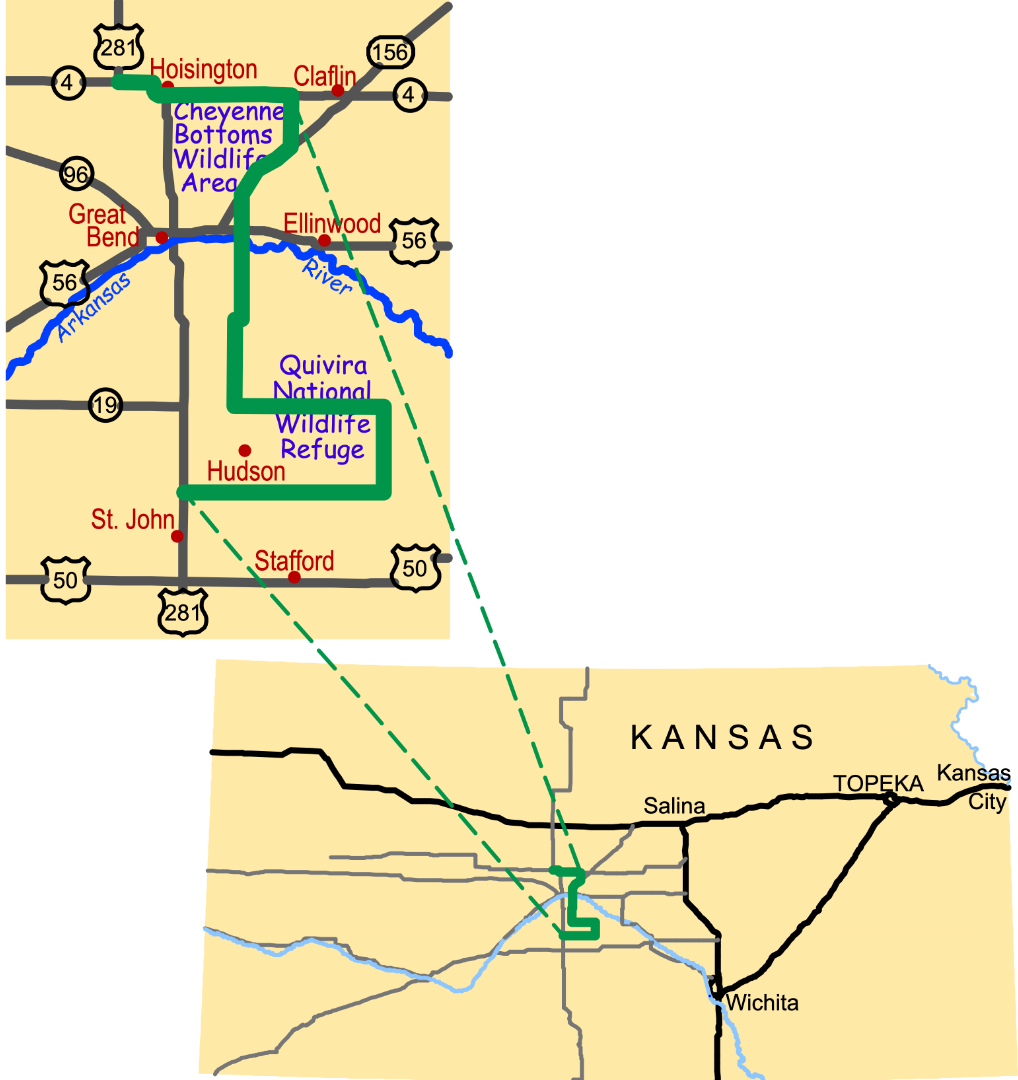Working...

Wings Over the Water
Miracles of Migration
"The stork in the heavens knoweth her appointed time; and the turtledove, and the crane, and the swallow, observe the time of their coming."
Jeremiah (8:7)
For thousands of years, we have marveled at bird migration. How could we not? Scientists report that a godwit tracked by satellite flew 7,145 miles without landing. But feats that amaze us are routine for birds that fly such distances every year. Consider the migratory birds that frequent our wetlands. Many breed in the arctic, then fly south as far as the tip of South America. Along the way, these birds depend on a network of wetlands for rest and refueling.
The marshes of the Texas Gulf Coast, the Great Salt Plains of Oklahoma, Quivira and Cheyenne Bottoms here in Kansas, the Rainwater Basin in Nebraska, and the Missouri Couteu region of North Dakota and Canada are interconnected by the birds that migrate between them. For waterfowl and shorebirds, these wetlands are like stepping stones across a stream. One missing stone can be ruinous.
Fat for Flight
Shorebirds often arrive at our wetlands with little fat for continuing migration. Simply put, they are out of gas. Once here, though, they may double their body weight. Shorebirds may fatten to a point where an extra ounce would prevent them from taking off!
Motion and Change
Scientists have many high-tech ways to monitor bird migration. Much of what we now know came from researchers who worked before the days of satellites and radio transmitters. Local bird banders, like Frank Robl and Ed Martinez*, labored tirelessly to net, measure, band, and release birds, illuminating the migration miracle.
Download the interpretive panel: Wings Over the Water Panel located at the Cheyenne Bottoms Scenic Overlook on K-4 Hwy.
To listen to more information click on the Audio Tour
Go to the Gallery to view photographs contributed by visitors to the Byway.
* Ed Martinez
Birds look for some place where they can rest, fatten up, continue their migration, either to the North or to the South. Some of these birds make very long flights at one jump. And you get some of those sandpipers... by the time they've rested and fueled up, they're about twice the size as when they arrived, because they've arrived low weights...ran out of energy. And they've got to have someplace to fuel up, and this is one of the areas where they do that.
-Ed Martinez, describing the critical importance of Cheyenne Bottoms and Quivira National Wildlife Refuge
Banding birds is not for the faint of heart. Researcher Ed Martinez worked for the State of Kansas as a biologist for 40 years, and during those years, he banded thousands of shorebirds and songbirds. He has been banding birds at Cheyenne Bottoms since the 1960s. Martinez once snared a great blue heron in his mist net, and as he tried to release the bird, it ran its knife-like beak through his hand. Martinez's work, as well as the work of other local bird banders like Frank Robl, has helped unlock many mysteries of bird migration.
More Birds and Wildlife pages...
Birds of the Woods and Prairie
Birds of the Wetlands and Water
Home on the Range
Jackrabbit Run
Magic Muck
Prey and Play



